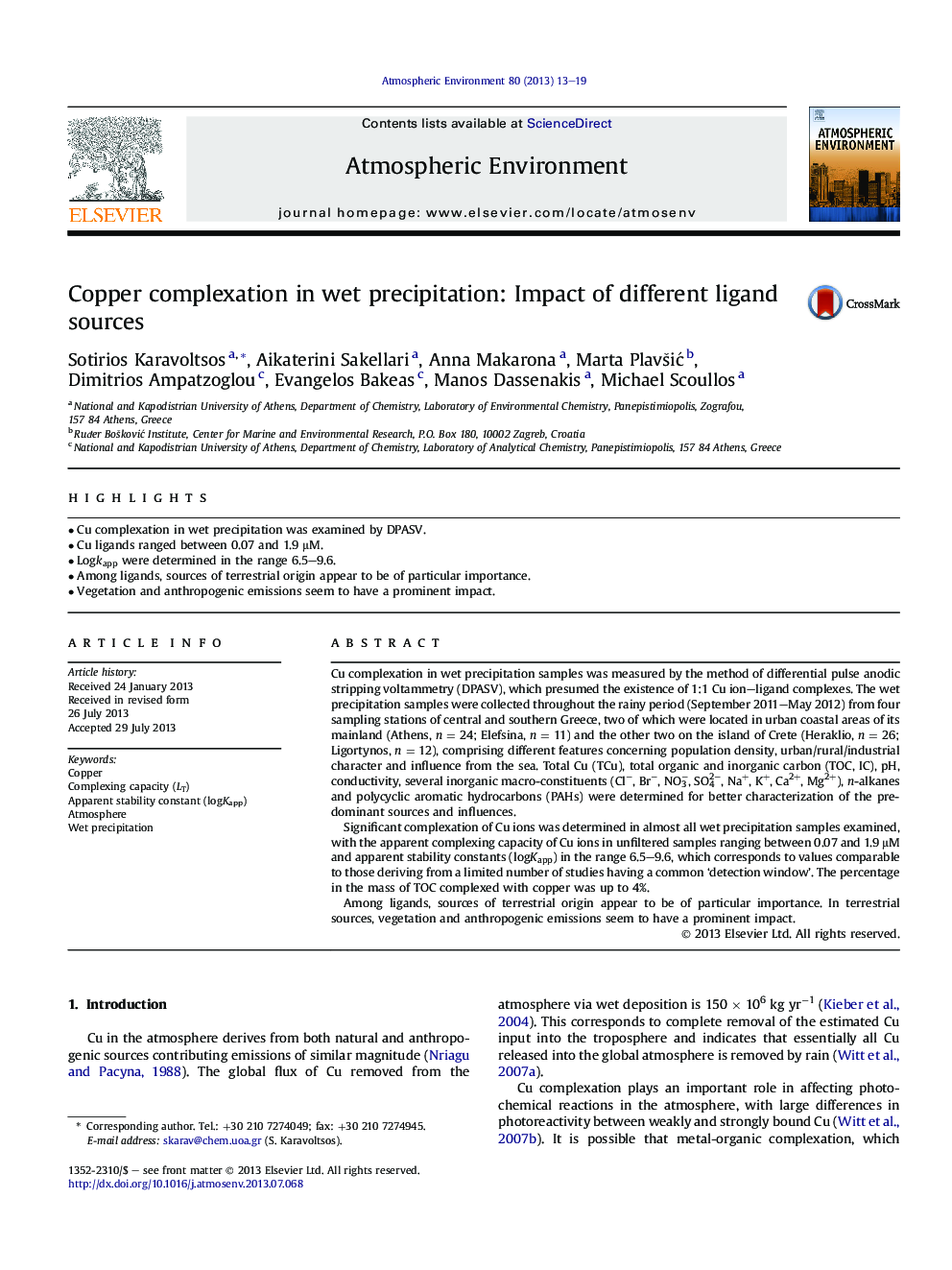| Article ID | Journal | Published Year | Pages | File Type |
|---|---|---|---|---|
| 6340606 | Atmospheric Environment | 2013 | 7 Pages |
â¢Cu complexation in wet precipitation was examined by DPASV.â¢Cu ligands ranged between 0.07 and 1.9 μM.â¢Logkapp were determined in the range 6.5-9.6.â¢Among ligands, sources of terrestrial origin appear to be of particular importance.â¢Vegetation and anthropogenic emissions seem to have a prominent impact.
Cu complexation in wet precipitation samples was measured by the method of differential pulse anodic stripping voltammetry (DPASV), which presumed the existence of 1:1 Cu ion-ligand complexes. The wet precipitation samples were collected throughout the rainy period (September 2011-May 2012) from four sampling stations of central and southern Greece, two of which were located in urban coastal areas of its mainland (Athens, n = 24; Elefsina, n = 11) and the other two on the island of Crete (Heraklio, n = 26; Ligortynos, n = 12), comprising different features concerning population density, urban/rural/industrial character and influence from the sea. Total Cu (TCu), total organic and inorganic carbon (TOC, IC), pH, conductivity, several inorganic macro-constituents (Clâ, Brâ, NO3â, SO42â, Na+, K+, Ca2+, Mg2+), n-alkanes and polycyclic aromatic hydrocarbons (PAHs) were determined for better characterization of the predominant sources and influences.Significant complexation of Cu ions was determined in almost all wet precipitation samples examined, with the apparent complexing capacity of Cu ions in unfiltered samples ranging between 0.07 and 1.9 μM and apparent stability constants (logKapp) in the range 6.5-9.6, which corresponds to values comparable to those deriving from a limited number of studies having a common 'detection window'. The percentage in the mass of TOC complexed with copper was up to 4%.Among ligands, sources of terrestrial origin appear to be of particular importance. In terrestrial sources, vegetation and anthropogenic emissions seem to have a prominent impact.
